Uranus
Picture credits
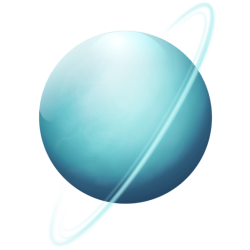

In the Solar System, there are rocky planets (Mercury, Venus, Earth and Mars), as well as gas giants (Jupiter and Saturn). Uranus and Neptune belong to the third category of planets in the Solar System, the ice giants. Despite their name and a surface temperature of -200 °C, ice giants feature high pressures and temperatures of several thousand degrees Celsius inside.
The internal structure of both planets is very similar: beneath a layer of hydrogen and helium (with a mass of about the earth’s mass) is a layer of the “planetary ices” water, ammonia and methane (about 12 Earth masses). At the center, there’s a small core (2 Earth masses). Neither planet has a real surface: they consist mainly of swirling fluids. So a spacecraft could not land anywhere on Uranus, but neither could it fly through its atmosphere unscathed. It would be destroyed by the extreme pressures and temperatures.
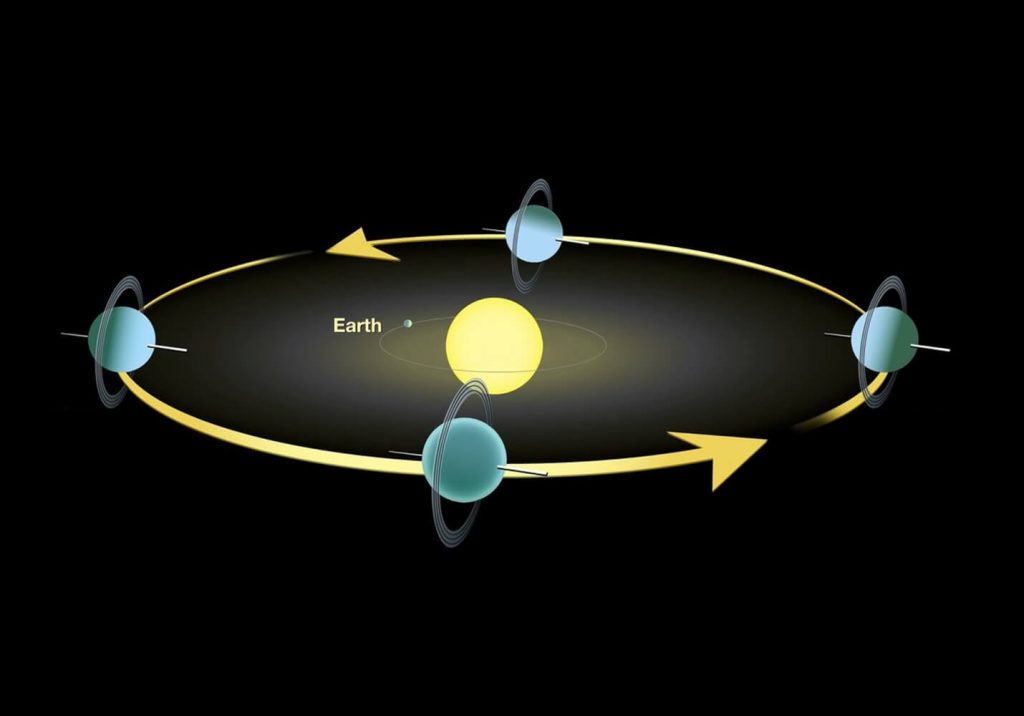
Uranus’ orbit is very different from that of all the other planets in the Solar System. These rotate in a similar way to Earth: as they orbit the Sun, each part of the planet alternates between day and night. Uranus, on the other hand, is tilted 90 degrees. It rolls, so to speak, on its orbit around the sun, but its north pole always points in the same direction. It is currently assumed that Uranus was hit by an Earth-sized protoplanet 3 to 4 billion years ago, which changed its axis of rotation.
As a result, each pole receives about 42 years of uninterrupted sunlight in the 84 years of an orbit, followed by 42 years of darkness.
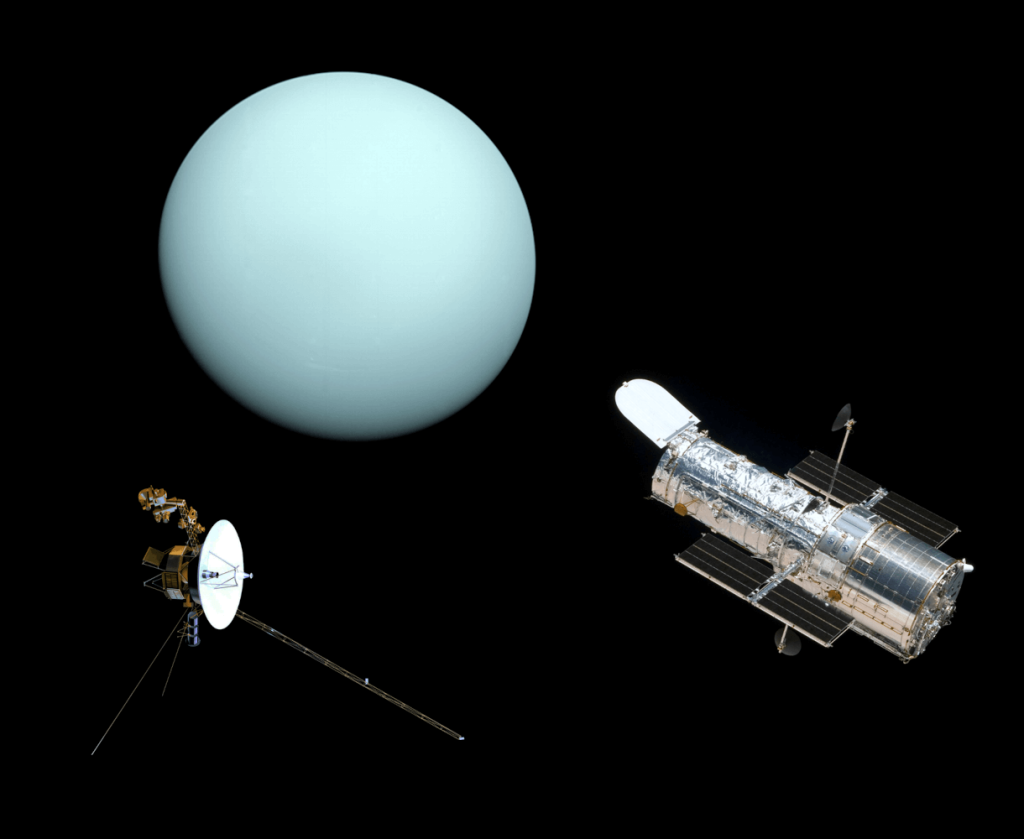
Uranus can be seen with the naked eye, but to understand that it is a planet and not a distant star, a telescope was needed. So far, Uranus has only been visited by one space probe: Voyager 2, which arrived in January 1986 and discovered eleven new moons and two new rings around the planet. Apart from this one space mission, telescopes are the only way to increase our knowledge of Uranus. As of now (June 2023), it is not clear when the next space mission to Uranus will launch. Possible candidates are MUSE (would reach Uranus possibly by 2044), OCEANUS (arrival in 2041) and Tianwen-4 (arrival in 2046).
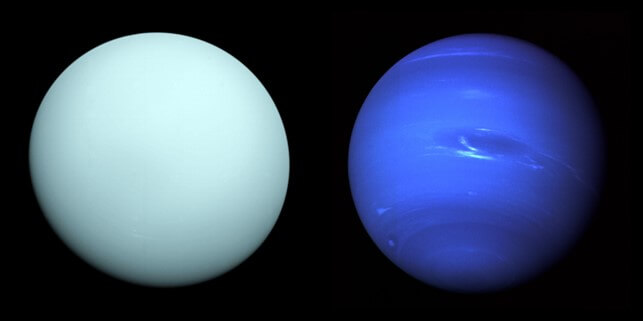
Uranus and Neptune are very similar in mass, composition and size. However, Neptune has a rich, deep blue hue, while Uranus has a much paler cyan hue. New research suggests that there is a layer of dense haze on both planets. However, it is thicker on Uranus than on Neptune and therefore brightens the appearance of Uranus more than that of Neptune. If it weren’t for the haze, both ice giants would be deep blue. Although this makes Uranus look very uniform, the Hubble Space Telescope has recorded raging storm bands and cloud layers with speeds of over 800 km per hour!

The 13 rings of Uranus are divided into two groups: The eleven inner rings are mainly narrow and dark grey. Of the two outer rings, the inner one is reddish, like dusty rings elsewhere in the Solar System, and the outer ring is blue like Saturn’s E ring. Some of the larger rings are surrounded by belts of fine dust. The image above shows a photograph of the rings taken by the Voyager 2 spacecraft.
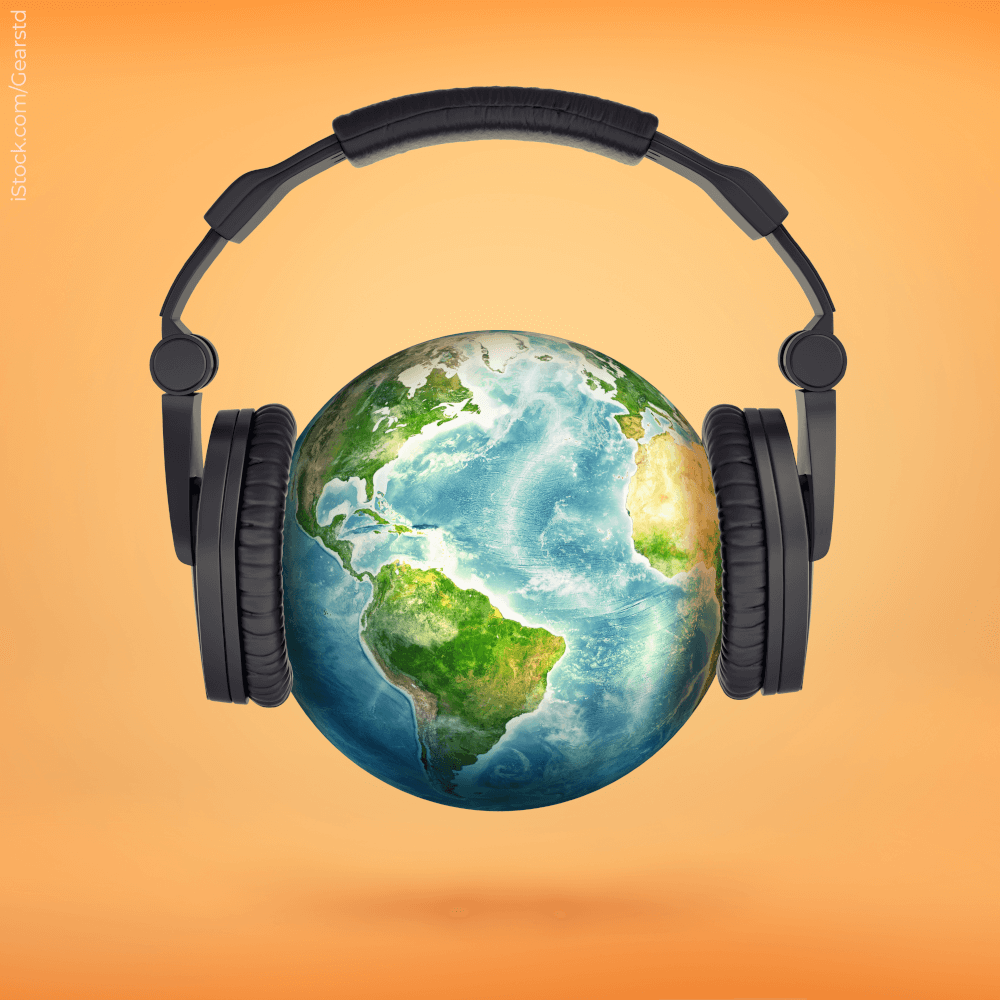
Audio guide
(available soon)
PhD students from the Institute of Physics at the University of Rostock give exciting insights into their research and explain the universe.
Quiz
What is special about Uranus’ moons?
